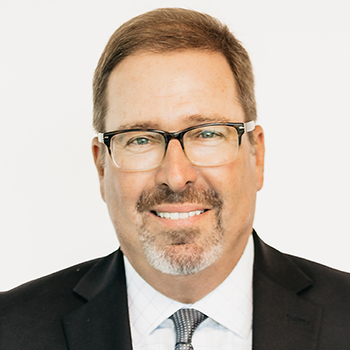
Having served as a skilled nursing facility (SNF) administrator and operations director for over 25 years, I have always found myself gravitating to several standard approaches I feel have contributed to my regulatory successes over the years. While not flawless by any means, I have enjoyed largely positive results that I attribute to core approaches in preparing for, and actively managing, surveys in progress. It is my hope that the following tips will help you to improve your SNF’s inspection survey results as well.
Active Resident Advocacy Systems
These programs go by different names but are essentially the same. To optimize resident satisfaction, it is important that each resident be assigned a staff member to serve as that individual’s advocate, or “angel,” if you will. These staff members complete and document regularly scheduled and unscheduled times to meet with the residents under their oversight. This program improves the quality of life for residents and, if administered properly, is an exceptional way to get in front of small concerns before they escalate and result in a call to the state health department. The small investment of time each week will often have the effect of building strong relationships with residents and their families, while at the same time eliminating many of the land mines often unseen until it is too late.
Robust Grievance Program
Starting a robust grievance program may not be easy. You may find significant pent-up concerns that have not been addressed in a while, if ever. Stay focused. This initial demand of time is worth it; the issues will ebb and subside. The key to turning the corner and gaining optimal traction rests in the grievance investigation and management process. This stage is where you close at least a part of the loop by documenting the efforts of a thorough investigation followed by completing resolution steps that include communicating back with residents and/or their families. Well-managed grievance programs serve as regulatory Teflon and optimally position a provider to gain positive outcomes and satisfied customers.
Quality Assurance and Performance Improvement (QAPI)[1]
Your QAPI program should be a systematic approach used to better understand and focus on organizational processes and systems, which helps eliminate the “Band-Aid” approach to problem-solving and gets at the root cause. Properly managed, QAPI tends to be more proactive than reactive and promotes sustained improvement. In addition to the myriad of agenda topics to be addressed at QAPI, it is extremely important to fold the advocacy and grievance program results and data into the committee’s discussion for additional trending and analysis.
Know the Triggers
It is often said that data doesn’t lie. While more often true than otherwise, use data to your advantage as you prepare for survey activity. Providers have access to all the same data that surveyors will use to identify residents with outlying conditions or outcomes. You have at your disposal all the information that can help formulate a likely targeted population for review during the survey. Why not use the data to get ahead of surveyors by building your own target list of residents whose charts should receive special ongoing auditing attention?
Rapid Response
It is unfortunate but inevitable that all providers will experience resident events that result in a significant negative outcome. When this occurs, time is of the essence. Your response and follow-up actions to the event could mean the difference between no citation or an Immediate Jeopardy. Interventions must be put in place quickly not just for the affected resident(s), but other residents also at risk for similar outcomes. For those operators fortunate to have additional organizational resources (clinical, operational, safety, etc.), a best practice to guide response planning following these events is to immediately pull together the brain trust of resources at your disposal to review the event details, problem solve, and complete a root cause analysis. From there, put all the actions in motion that will address the resident affected, others at risk, your training and education plan for staff, and your process to monitor compliance with your plan.
“It’s an Open Book Test”
The expression above was used regularly by a past mentor of mine. What he meant was that you should have exceptional command of all the records and documentation related to all state reportable events. You know these events will receive scrutiny, and you know exactly what surveyors will want to see in the records. Take the extra time to polish the details as best as you can. Granted, there may be times when you won’t have a lot to work with, but anything that’s done to improve the presentation and follow-up activity from events can only improve the chances you will be found compliant.
Weekend Oversight
As an administrator, I found it difficult, if not impossible, to relax on weekends unless I was at my community checking in with staff, reviewing 24-hour logs and incident reports, flipping through charts (back in the paper days)…you know the drill. I would do anything to keep Monday morning from being a disaster that took half the week to clean up. As I matured in the profession, I realized I needed intense team support—especially when operating a 473-bed super SNF. My solution was to develop weekend administrator protocols that mirrored how I would check operations Saturdays, Sundays, holidays, etc. I then educated my team on how to manage with that level of precision during non-business hours of operation. My quality of life improved immediately after smoothing out the weekend bumps and staying further ahead of any negative outcome trends.
Third-Party Compliance Testing
Even the best operators can’t detect all areas of regulatory vulnerability. Despite best efforts, sometimes we are so close to the work we can’t see the problems or the opportunities. That is why I have always found it so valuable to secure a non-related consultant (with an emphasis on a neutral third party) to kick the tires on survey preparedness at least three months prior to any annual survey. The most important part of the survey preparedness process is what you do after it is over. If areas of deficient practices are found, bring them to QAPI, document findings, and come up with a plan of correction. It is worth the investment to have a mock survey completed and have the added assurance that no surprises will come up when the surveyors come in. If you are looking for a partner who can help you in preparing for your upcoming survey through completion of a mock survey, Health Dimensions Group can assist.
Geographic Assignment
As the administrator, when surveyors are present and it’s go time, you will want to be everywhere at the same time. Since that can’t happen, I found a solution that works very well and serves as the next best thing. Historically, I like to take the physical building and break it up into as many spaces as I have departmental leadership staff capable of assisting. During the survey process, these individuals own everything that goes on in their assigned space during the survey, which includes resident care—even if the resident is not in her room or unit. Here again, I provide training to my leadership team so they know how to assess not only the physical environment, but the entire residence plan of care. Each leader is instructed on how to obtain a care card and how to use it in order to ensure everything care planned is in place for each assigned resident (e.g., eyeglasses, positioning devices, specialty mattresses, gripper socks, heel protectors, etc.). Leaders are also responsible for monitoring things such as call light placement, room cleanliness and sanitation, as well as assisting with dining room oversight.
Infection Control
Although the worst of COVID-19 appears to be behind us, surveyors are paying special attention to infection control practices, and it brings up several areas for discussion. What will we do in the future to more quickly react to health care concerns? How will we be able to provide infection control and who will provide staff guidance? This is not optional; facilities must have an Infection Preventionist who can describe their well-developed and functioning infection prevention and antibiotic stewardship programs.
Know the Requirements of Participation
The federal Requirements of Participation (ROP) form the primary guide for long-term care facilities. Having an understanding of the regulations for what standards we need to achieve for the safety and care of our residents is imperative to a good survey. The Centers for Medicare & Medicaid Services (CMS) will, on occasion, provide updates or additional guidance, such as last year’s QSO-22-19-NH. Ensure your survey readiness with a survey manual using the Entrance Conference Worksheet provided by CMS and reading our blog post “Last-minute Action Items In Advance of ROP Changes.” Staying abreast of these changes will provide you with information that your next surveyor might be looking for.
In Summary
While you may not be able to foresee every issue before it happens, taking the time upfront to prepare your facility for the inevitable survey will provide tremendous benefit to you and your residents. Good luck with your survey preparation and management endeavors. I hope a couple of these tips may serve to elevate your future outcomes.
If you’d like more information on how HDG can help your organization in preparing for your upcoming survey through our mock survey services or broader operational support, please contact us at info@hdgi1.com or 763.537.5700.
[1] Information in this section provided by Kathy Karr, BSHA, NHA, RN, Vice President, Consulting Services










